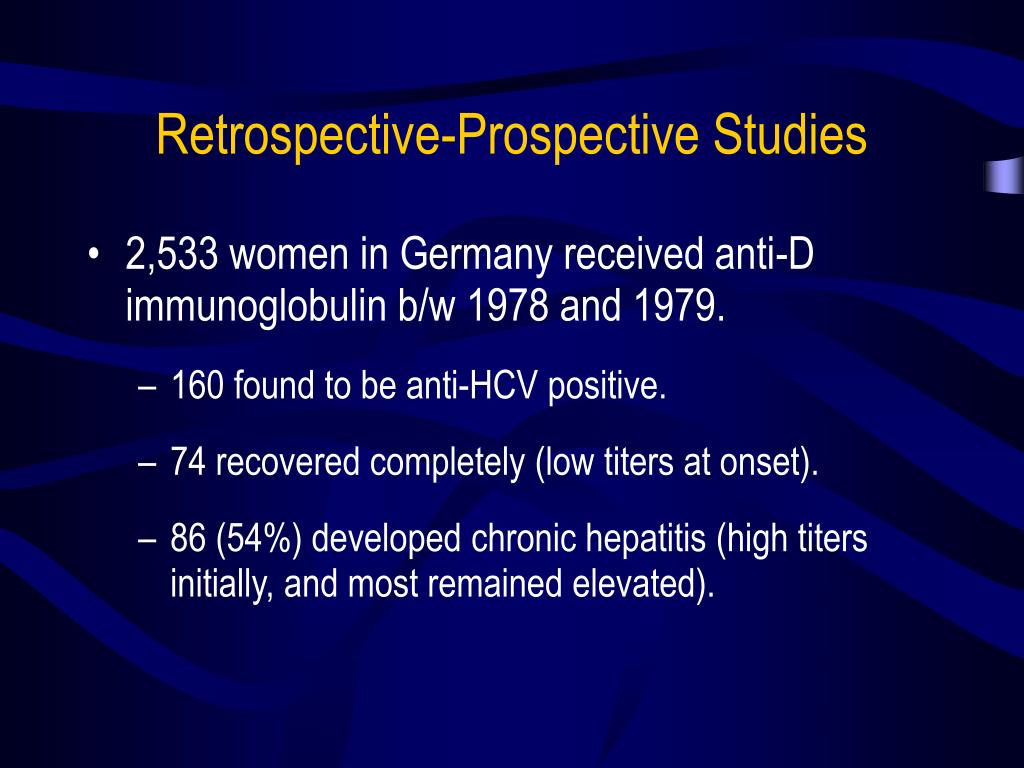
They can classify them as "exposed" or "unexposed" based on their employment records, and they can use a number of sources to determine subsequent outcome status, such as death (e.g., using health records, next of kin, National Death Index, etc.). In essence, the investigators are jumping back in time to identify the study cohort at a point in time before the outcome of interest (death) occurred. However, rather than following these subjects for decades, it would be more efficient to use employee health and employment records over the past two or three decades as a source of data. The employees who actually worked with chemicals used in the manufacturing process would be the exposed group, while clerical workers and management might constitute the "unexposed" group. Since this is a fairly rare exposure, it would be advantageous to use a special exposure cohort such as employees of a large tire manufacturing factory. Suppose investigators wanted to test the hypothesis that working with the chemicals involved in tire manufacturing increases the risk of death. They then determine whether the subject subsequently developed the outcome of interest. The investigators jump back in time to identify a cohort of individuals at a point in time before they have developed the outcomes of interest, and they try to establish their exposure status at that point in time. In contrast, retrospective studies are conceived after some people have already developed the outcomes of interest. The characteristic that distinguishes a study as prospective is that the subjects were enrolled, and baseline data was collected before any subjects developed an outcome of interest. The analysis always occurs after a certain number of events have taken place. Since the data analysis occurs after some outcomes have occurred, some students mistakenly would call this a retrospective study, but this is incorrect. Pitfall: Note that in these prospective cohort studies a comparison of incidence between the groups can only take place after enough time has elapsed so that some subjects developed the outcomes of interest. Key Concept: The distinguishing feature of a prospective cohort study is that at the time that the investigators begin enrolling subjects and collecting baseline exposure information, none of the subjects has developed any of the outcomes of interest. Alternatively, one could group subjects based on their body mass index (BMI) and compare their risk of developing heart disease or cancer. For example, one could identify smokers and non-smokers at baseline and compare their subsequent incidence of developing heart disease. In this way, investigators can eventually use the data to answer many questions about the associations between "risk factors" and disease outcomes. over a period of time, usually for years, to determine if and when they become diseased and whether their exposure status changes. After baseline information is collected, subjects in a prospective cohort study are then followed "longitudinally," i.e.

The investigators design the questions and data collection procedures carefully in order to obtain accurate information about exposures before disease develops in any of the subjects.

Meanwhile, household panel studies, which may start interviewing participants in adulthood, often collect an array of retrospective information about past events.In a prospective study like the Nurses Health Study baseline information is collected from all subjects in the same way using exactly the same questions and data collection methods for all subjects.

For example, because birth cohort studies interview their participants every few years or so, participants are often asked to retrospectively provide information on their lives since the previous interview (for example, ‘since we last saw you, have you been diagnosed with any of the following medical conditions?’). In reality, many studies use both prospective and retrospective methods. The Hertfordshire Cohort Study is an example of an historical cohort study. In the case of historical cohort studies, people are linked to existing historical information. This might be through interviews in which participants are asked to recall important events, or by identifying relevant administrative data to fill in information on past events and circumstances. In retrospective studies, individuals are sampled and information is collected about their past.Birth cohort studies are a good example of prospective studies. In prospective studies, individuals are followed over time and data about them is collected as their characteristics or circumstances change.Another key distinction in longitudinal research is between prospective and retrospective studies:


 0 kommentar(er)
0 kommentar(er)
